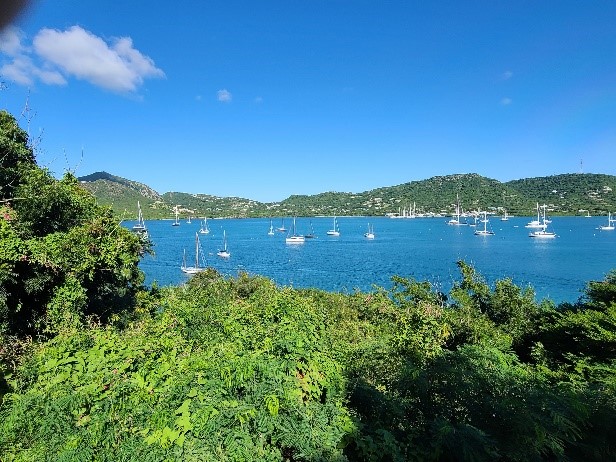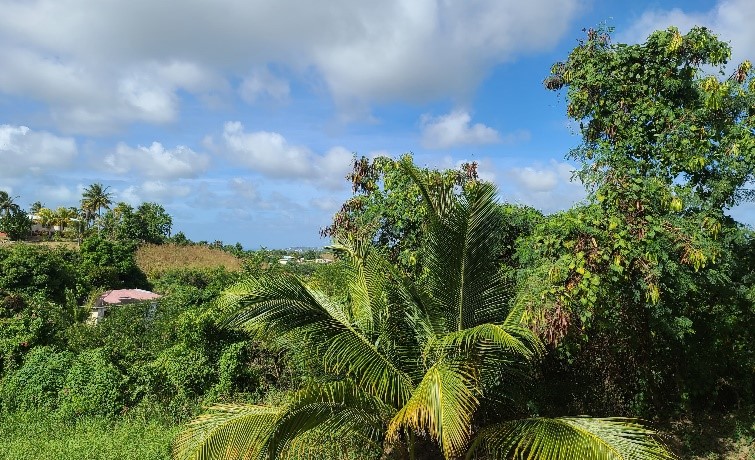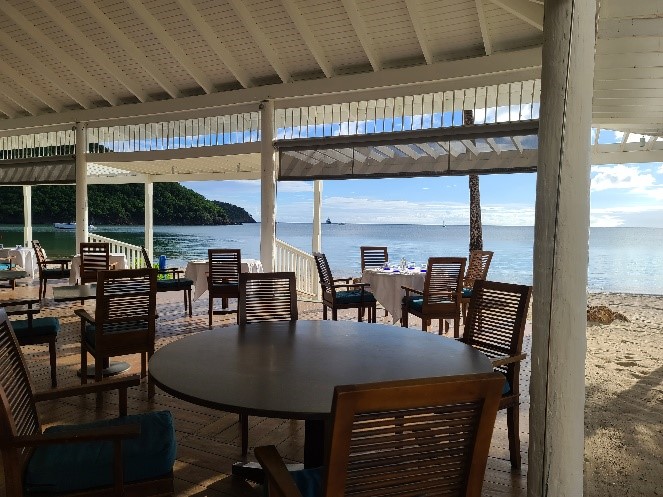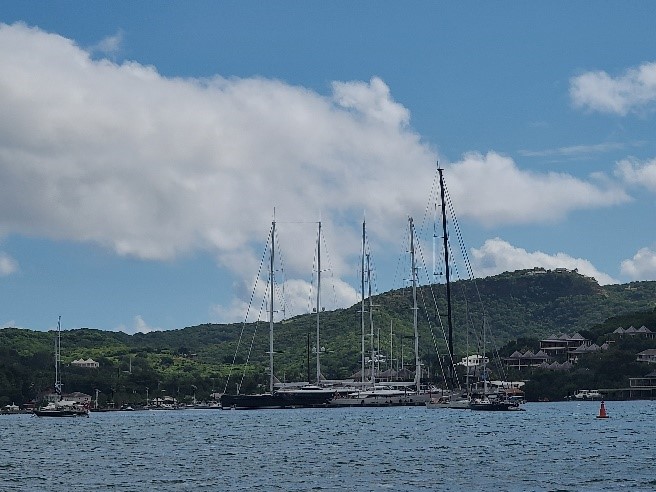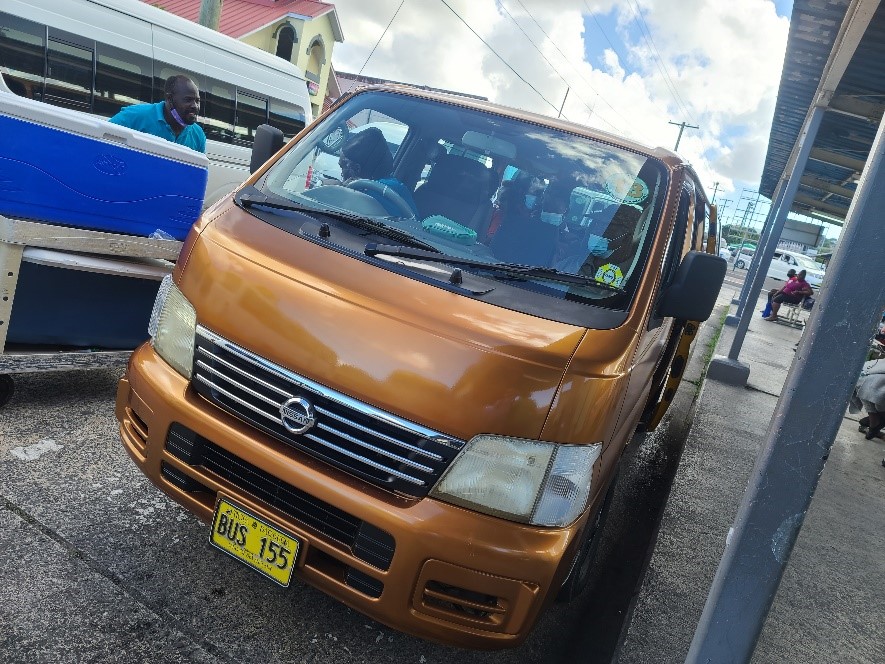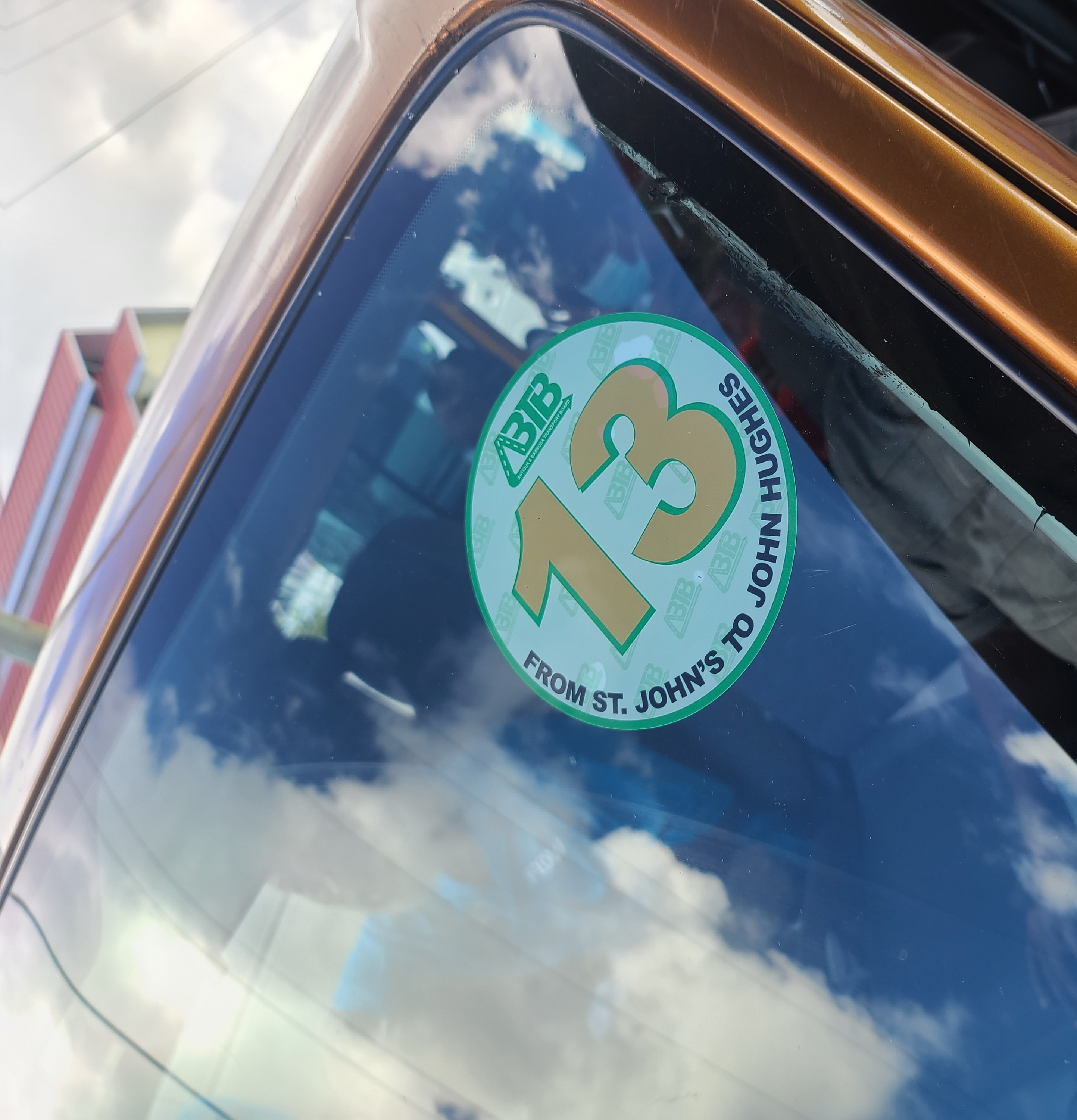Antigua 2020: Bus #13
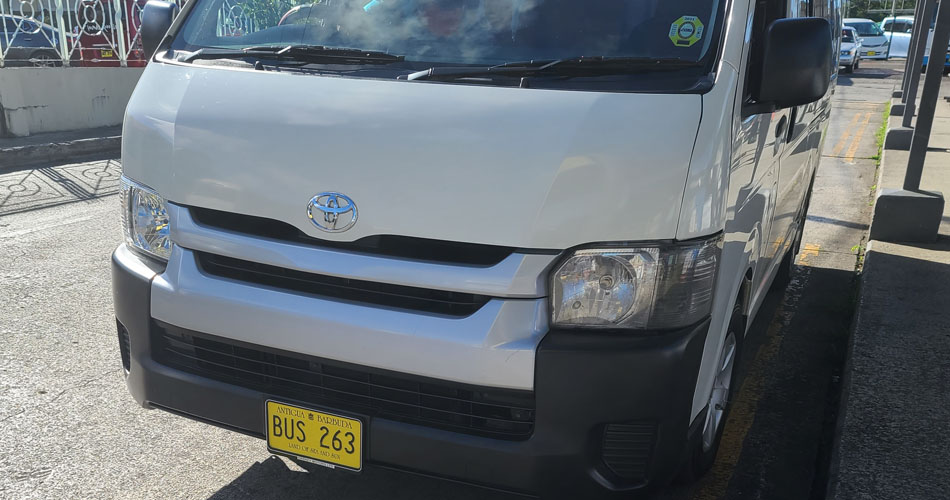

Savvy Sailing Girl came to Antigua to join a boat as crew. But since the owner hadn’t quit smoking as he’d said, and being particularly sensitive to smoke and allergic, she decided that breathing freely somewhere on land was a better option than a smokey environment afloat. She booked an Airbnb studio apartment for a month in the middle of the island and settled in. It’s a bit of countryside for a change and easy to get to both St. John’s (the main town) in the north, English/Falmouth Harbors in the south and Jolly Harbor in the west. The east side of the island is yet to be explored as of this writing.
Being a tourist during these unprecedented covid times is a very different experience here in the Caribbean. Normally in-season is winter for most and through May/June for cruising and charter boats wanting to explore the beautiful islands outside of hurricane times. But, as everyone is painfully aware, traveling and exploring in 2020/2021 is a challenge by land or by sea. St. John’s is still active with people going about their normal business, but there isn’t even a hint of tourism currently. Resort areas and upscale restaurants are largely empty as well.
There are some super yachts down at English/Falmouth Harbor, but only a fraction of what is normally present. So far however, as Savvy Sailing Girl writes/posts this, Antigua does seem to be one of the safer places to shelter. Locals are respectful of the mandate to wear masks and there are almost no active cases of the virus. Of course, that could change in the blink of an eye.
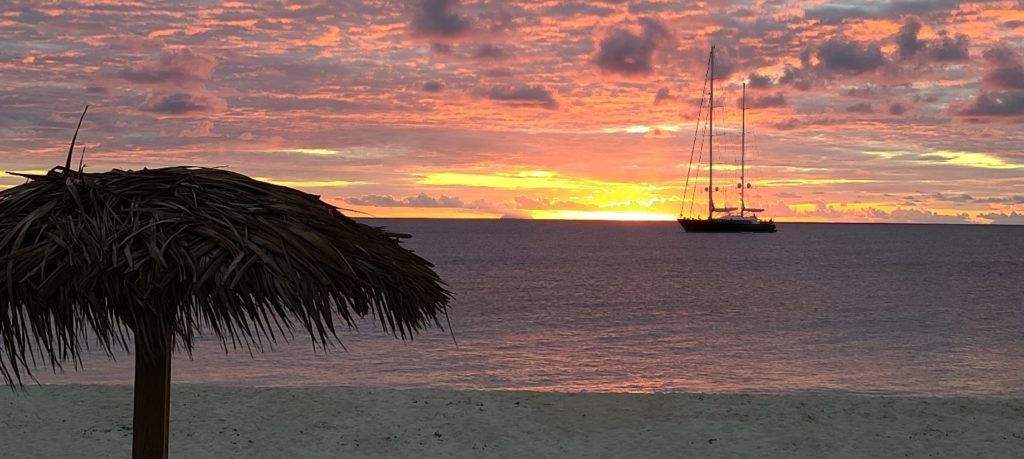
While exploring on land, Savvy Sailing Girl likes finding her way around by local bus. Tourists normally don’t do this much, but it does allow one the opportunity to meet more people as well as see how many locals (without cars) live and travel. Taxis can be somewhat expensive out in the countryside and rentals are as well, requiring a local “international” driver’s license to be obtained here in Antigua. It doesn’t seem worth the cost if you aren’t using the car frequently. SSG’s Airbnb apartment sits directly on a road with a bus, so that seemed like the best “route” to go, so to speak. 😊
And here begins the “Beloved Bus #13” adventure…
As with many islands in the Caribbean and elsewhere, the “bus” is actually a van. The vans are privately owned, so there isn’t any discernible governing system to establish a schedule, though there are official routes (well at least route numbers) defined. This owner/operator approach to transportation along with island flexibility may account for some of the peculiar and inconsistent behaviors observed and documented below. SSG hopes this article will provide some insights on how to navigate the bus-taking process to best advantage as well as provide some entertainment to those who will ultimately decide that taxis and car rentals are, in fact, well worth the price for their convenience.
Identifying the bus – Buses as well as taxis have yellow license plates instead of white and are (cleverly) marked “BUS” or “TX” along with the number, so as they draw near you can tell which is at hand.
If your eyes aren’t all that sharp, you’ll notice soon enough that the taxis are generally in much better shape than the buses. The buses are a ratty-looking lot for the most part, although there are exceptions and significant variations in condition as well as size, ranging from normal van dimensions to larger (but not full-sized) bus proportions. Regardless, you are always happy to see one approaching if you are waiting. They are, thus far, always white or silver/gray, except for the one #13 bus that is bronze. They will also be sporting a circular sticker on the passenger windscreen with the bus number so you can make sure you’re hopping on the right one. There is at least one road with more than one bus route along it.
Catching the bus – Unless you are starting at the bus terminal, you’ll likely be standing somewhere along the road and not necessarily at a location marked as an official bus stop. The good news is that buses will stop and pick you up anywhere along the way. If you are standing and looking even somewhat expectant at passing vehicles, the bus will likely slow down and stop to check. Better not to rely on that, and when you see your bus barreling down the road towards you, wave it over and climb in. If you happen to be starting at the beginning of the route, at a bus terminal, you will find that the driver/owner waits until the bus is entirely (or mostly) full before departing. So, you may find yourself sitting for up to 20+ minutes on off hours.

Bus protocol – When entering the bus, it is customary to say hello to everyone already on board. Once seated, most people (during these covid times anyway) do not converse… too hard with masks. You pay for the trip when you exit the bus as the price depends on your distance traveled. It’s still the best bargain in Antigua with the furthest distance so far costing $3 ECD (Eastern Caribbean Dollars) which is a little over $1 USD at the moment.
Bus travel – Yay, you’re on board! And you are literally careening down the road at formula 1 break-neck speeds, or so it feels like. These buses mean business and alternately speed along then slow instantaneously to a snail’s pace at the next moment (careful you don’t get whiplash!) to avoid known bumps, dips and other hazards on ill-kept roads. There is always some light horn honking (more like tapping/beeping) involved as well. This is to greet other buses and friends. Horns are also used to alert vehicles that they are approaching so best watch out, and a variety of other reasons that Savvy Sailing Girl has yet to fully decipher. Also, something that defies complete understanding are the bus routes… in particular, SSG offers the reader her experiences and best practices with the #13 bus…
Bus #13 – Ah, the beloved bus #13. This is the bus that runs along the road where Savvy Sailing Girl is staying. It is not a main road per se (despite being named “Buckley’s Main Road”), but it is a central one. The route begins at the West Bus Terminal in St. Johns and follows All Saints Road until a round-about where it branches off. It continues along this road for a few miles and then things get a bit confusing… it meanders in a variety of different directions. SSG is not sure whether there actually IS an official route or direction, but she has been on about half as many unique routes as times she has been on the bus, which is to say… a lot. If you’re headed south to English/Falmouth Harbor, then you’ll need to connect with the #17 bus. You can do this by taking the #13 bus north to the round-about (which means you are backtracking somewhat) or take it south and walk about 5-7 minutes across to where All Saints road continues on.

Bus #13: Tip 1 – Never pass up a #13 bus! The #13 bus does not run very often, except during peak hours. If you are heading south to English/Falmouth Harbor, take the first available bus in either direction, north or south, to connect with the #17 bus. Don’t let a #13 bus go by as you will be waiting and waiting and then wishing you had grabbed the one that got away.
Bus #13: Tip 2 – Shortest distance does not equal shortest travel time. When you are returning from English/Falmouth Harbor, have walked 5-7 minutes back to where the #13 bus runs and are waiting for the bus north… grab any #13 bus and just get on. Even if it is heading in the wrong direction, you never want to pass up a #13 bus. You may get a short detour or a complete scenic tour of grand proportions (happily, they don’t charge extra for this), but you will eventually reach your destination. If you don’t get on then, the bus may go for a coffee break or take the rest of the day off… no joke.
Bus #13: Tip 3 – Exception to Tip 1. If you are heading to St. Johns rather than connecting to #17, then you really want the #13 bus going north and stay on until the end point. In this case, your best bet is going during peak morning times (say, before 9am). Otherwise, you will wait quite some time or suffer a particularly long (though still) scenic tour and delay.
Bus #13: Tip 4 – Corollary to Tip 2. There’s no telling what the shortest travel time is. If you are returning from English/Falmouth Harbor, then you might think of continuing on the #17 bus up to the north where the #13 bus splits off from All Saints road… this would save you walking and if it’s getting late, there are street lamps to wait under. You might also think there would be more buses heading back from St. John’s. This might work well, except at peak late-afternoon/early-evening times. There will be more buses heading back, but they will be full coming from St. John’s, as no one would take a #13 and get off before the round-about… they’d get on the bigger and more frequent #17 bus. SSG has had full #13 buses pass her by until she realized this and updated her strategy… applying Bus #13: Tip 2.
Bus #13: Tip 5 – Supermarket Delight. This tip is for anyone who actually will be staying and using the beloved bus #13, or the bus #17 from English/Falmouth, or even the bus #20/22 from Jolly Harbor. It may even apply to other buses that SSG hasn’t discovered yet. The supermarket to end all supermarkets in Antigua is the Epicurean. There is one in Jolly Harbor, but the one just outside of St. John’s is about 4 times larger and has so many more delightful things (including someone making take-out sushi!) There is a bus that connects from the West Bus Terminal in town and goes directly to the Epi! It sits on the outer edge out front and has the sign “Woodlands” on it. Rattier than many/most, this bus runs hourly except for the one time it didn’t show up at all at the Epi. Come to find out that the bus goes home between 2:30 and 5pm for a rest. So time your shopping accordingly. You’re welcome!
Bus #13: Tip 6 – If you find yourself waiting for an eternity for a #13 bus and/or need to get somewhere punctually without delay, then surrender and flag down or call a taxi!
So there you have it, Antigua and the #13 bus adventure!

